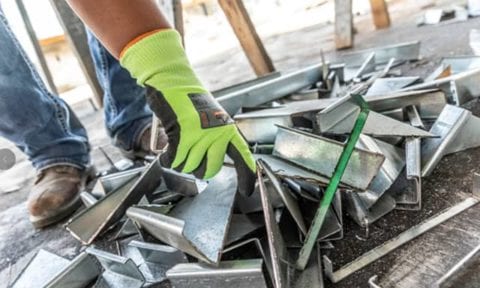 To better understand ANSI/ISEA 105 versus EN 388 for cut-resistant glove standards, look no further.
To better understand ANSI/ISEA 105 versus EN 388 for cut-resistant glove standards, look no further.
Designed to ensure safety across multiple industries, ANSI/ISEA 105 (United States) and EN 388 (Europe) are the two major global standards used to test and evaluate work gloves for the following protection areas:
- Cut resistance
- Abrasion resistance
- Tear resistance
- Puncture resistance
Cut resistance is the main area of focus, which is why ANSI/ISEA 105 and EN 388 help measure the force it takes for a blade to cut through certain material.
Two main tests for cut resistance
The ANSI/ISEA (American National Standards Institute/International Safety Equipment Association) 105 testing process involves a machine called a tomodynamometer (TDM), which pulls a blade across a glove’s surface under varied loads and measures the weight needed to cut through. The sample is cut five times with three different loads and an average is calculated.
Involving the coupe method, the EN 388 testing process takes place when material is placed beneath a rotating blade with a fixed weight. The challenge with this test is that the blade will dull if it’s on highly cut-resistant material, which can lead to inaccurate results. Therefore, the coupe method is mainly used for lower cut-resistant materials. Alternatively, the ISO (International Standardization Organization) 13997 testing method uses a similar TDM approach as mentioned earlier, attaining more accurate results for higher cut-resistant materials.
ANSI/ISEA 105 versus EN 388: Find the right cut-resistant glove
You need gloves that protect against cuts, slashes, lacerations and abrasions. When making your choice, make sure your gloves meet the standards addressed above.
This blog post was drafted in partnership with Ergodyne. Check out Ergodyne’s original post, “ANSI 105 and EN 388: Cut-resistant glove standards explained.”
Related posts
Thermal winter work gloves provide quality insulation in extreme cold
Anti-vibration gloves review: Fight hand-arm vibration syndrome